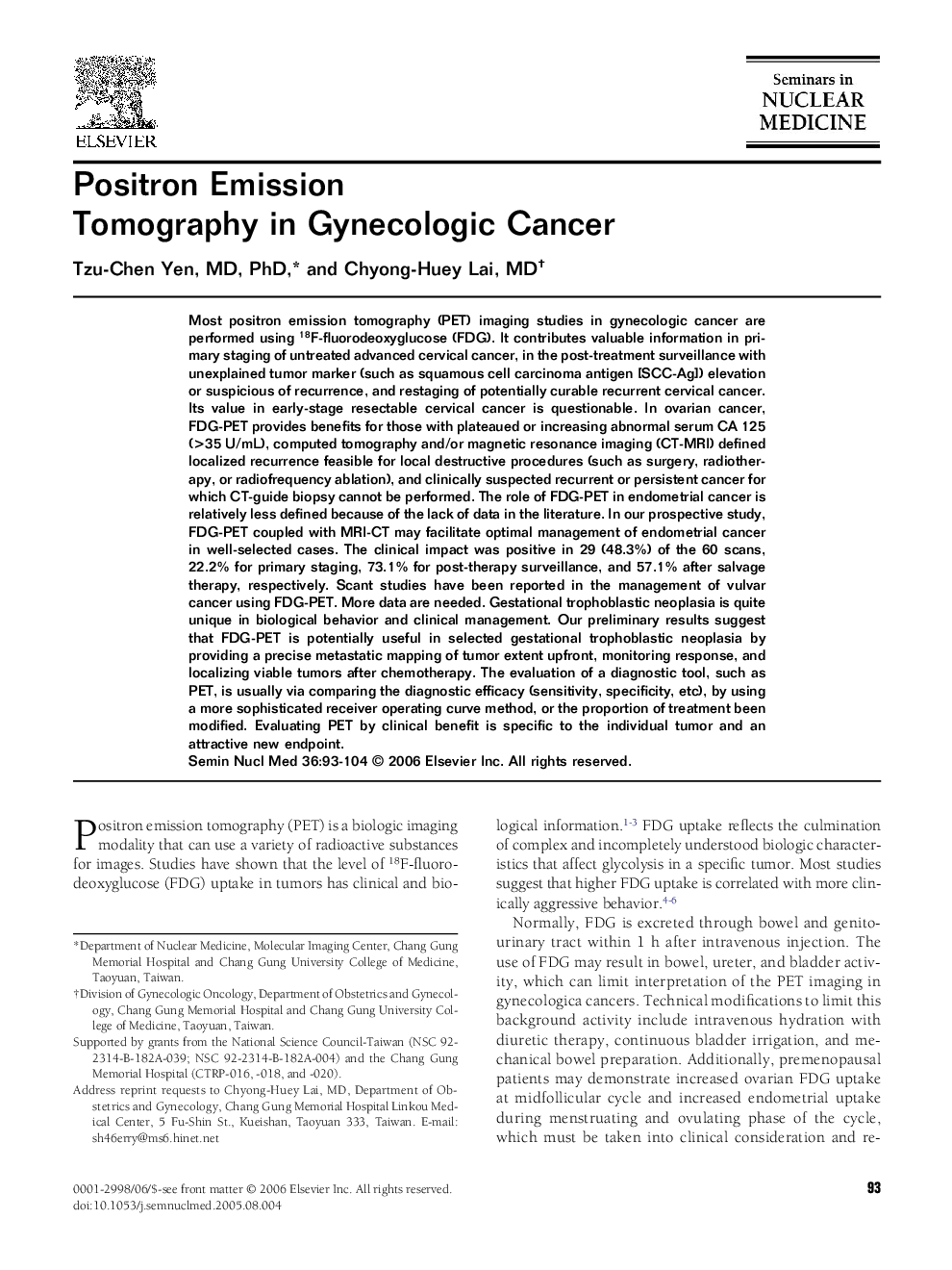| Article ID | Journal | Published Year | Pages | File Type |
|---|---|---|---|---|
| 4251311 | Seminars in Nuclear Medicine | 2006 | 12 Pages |
Most positron emission tomography (PET) imaging studies in gynecologic cancer are performed using 18F-fluorodeoxyglucose (FDG). It contributes valuable information in primary staging of untreated advanced cervical cancer, in the post-treatment surveillance with unexplained tumor marker (such as squamous cell carcinoma antigen [SCC-Ag]) elevation or suspicious of recurrence, and restaging of potentially curable recurrent cervical cancer. Its value in early-stage resectable cervical cancer is questionable. In ovarian cancer, FDG-PET provides benefits for those with plateaued or increasing abnormal serum CA 125 (>35 U/mL), computed tomography and/or magnetic resonance imaging (CT-MRI) defined localized recurrence feasible for local destructive procedures (such as surgery, radiotherapy, or radiofrequency ablation), and clinically suspected recurrent or persistent cancer for which CT-guide biopsy cannot be performed. The role of FDG-PET in endometrial cancer is relatively less defined because of the lack of data in the literature. In our prospective study, FDG-PET coupled with MRI-CT may facilitate optimal management of endometrial cancer in well-selected cases. The clinical impact was positive in 29 (48.3%) of the 60 scans, 22.2% for primary staging, 73.1% for post-therapy surveillance, and 57.1% after salvage therapy, respectively. Scant studies have been reported in the management of vulvar cancer using FDG-PET. More data are needed. Gestational trophoblastic neoplasia is quite unique in biological behavior and clinical management. Our preliminary results suggest that FDG-PET is potentially useful in selected gestational trophoblastic neoplasia by providing a precise metastatic mapping of tumor extent upfront, monitoring response, and localizing viable tumors after chemotherapy. The evaluation of a diagnostic tool, such as PET, is usually via comparing the diagnostic efficacy (sensitivity, specificity, etc), by using a more sophisticated receiver operating curve method, or the proportion of treatment been modified. Evaluating PET by clinical benefit is specific to the individual tumor and an attractive new endpoint.
